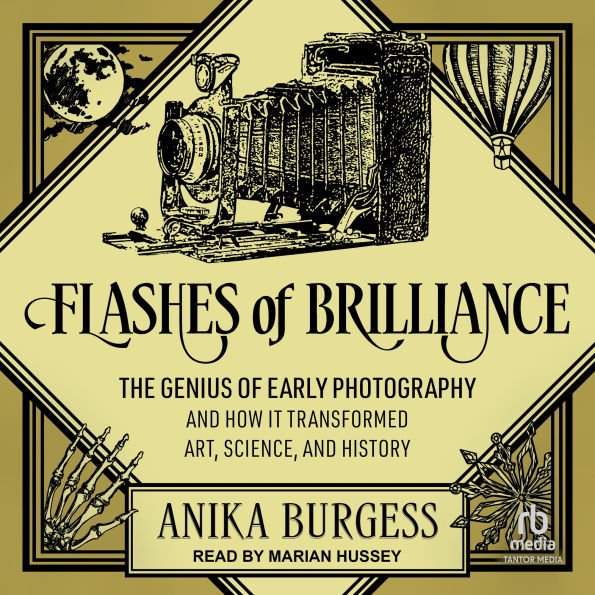"Anika Burgess has not only an eye for overlooked images but also an ear for the unusual characters and distinctive voices that narrated this history as it unfolded in the nineteenth and early twentieth centuries. Her enthusiasm for photography’s surprising stories, and her occasional wry aside from the shores of the twenty-first century, is infectious."
Today it's routine to take photos from an airplane window, use a camera underwater, watch a movie, or view an X-ray. But the photographic innovations more than a century ago that made such things possible were experimental, revelatory, and sometimes dangerous-and many of the innovators, entrepreneurs, and inventors behind them were memorable eccentrics. In Flashes of Brilliance, writer and photo editor Anika Burgess engagingly blends art, science, and social history to reveal the most dramatic developments in photography from its birth in the 1830s to the early twentieth century.
Burgess explores how photographers uncovered new vistas, including catacombs, cities at night, the depths of the ocean, and the surface of the moon. She describes how photographers captured the world as never seen before. She takes us on a tour of astonishing innovations. Burgess also delves into the early connections between photography and society that are still with us today: how photo manipulation was an issue right from the start; how the police used the telephoto lens to surveil suffragists; and how leading Black figures like Sojourner Truth adapted self-portraits to assert their identity and autonomy.
Filled with fascinating tales, Flashes of Brilliance shows how the rise of a new art form transformed culture and our view of the world.
Today it's routine to take photos from an airplane window, use a camera underwater, watch a movie, or view an X-ray. But the photographic innovations more than a century ago that made such things possible were experimental, revelatory, and sometimes dangerous-and many of the innovators, entrepreneurs, and inventors behind them were memorable eccentrics. In Flashes of Brilliance, writer and photo editor Anika Burgess engagingly blends art, science, and social history to reveal the most dramatic developments in photography from its birth in the 1830s to the early twentieth century.
Burgess explores how photographers uncovered new vistas, including catacombs, cities at night, the depths of the ocean, and the surface of the moon. She describes how photographers captured the world as never seen before. She takes us on a tour of astonishing innovations. Burgess also delves into the early connections between photography and society that are still with us today: how photo manipulation was an issue right from the start; how the police used the telephoto lens to surveil suffragists; and how leading Black figures like Sojourner Truth adapted self-portraits to assert their identity and autonomy.
Filled with fascinating tales, Flashes of Brilliance shows how the rise of a new art form transformed culture and our view of the world.

Flashes of Brilliance: The Genius of Early Photography and How It Transformed Art, Science, and History

Flashes of Brilliance: The Genius of Early Photography and How It Transformed Art, Science, and History
FREE
with a B&N Audiobooks Subscription

Editorial Reviews
Product Details
| BN ID: | 2940193156963 |
|---|---|
| Publisher: | Tantor Audio |
| Publication date: | 07/08/2025 |
| Edition description: | Unabridged |
Videos

